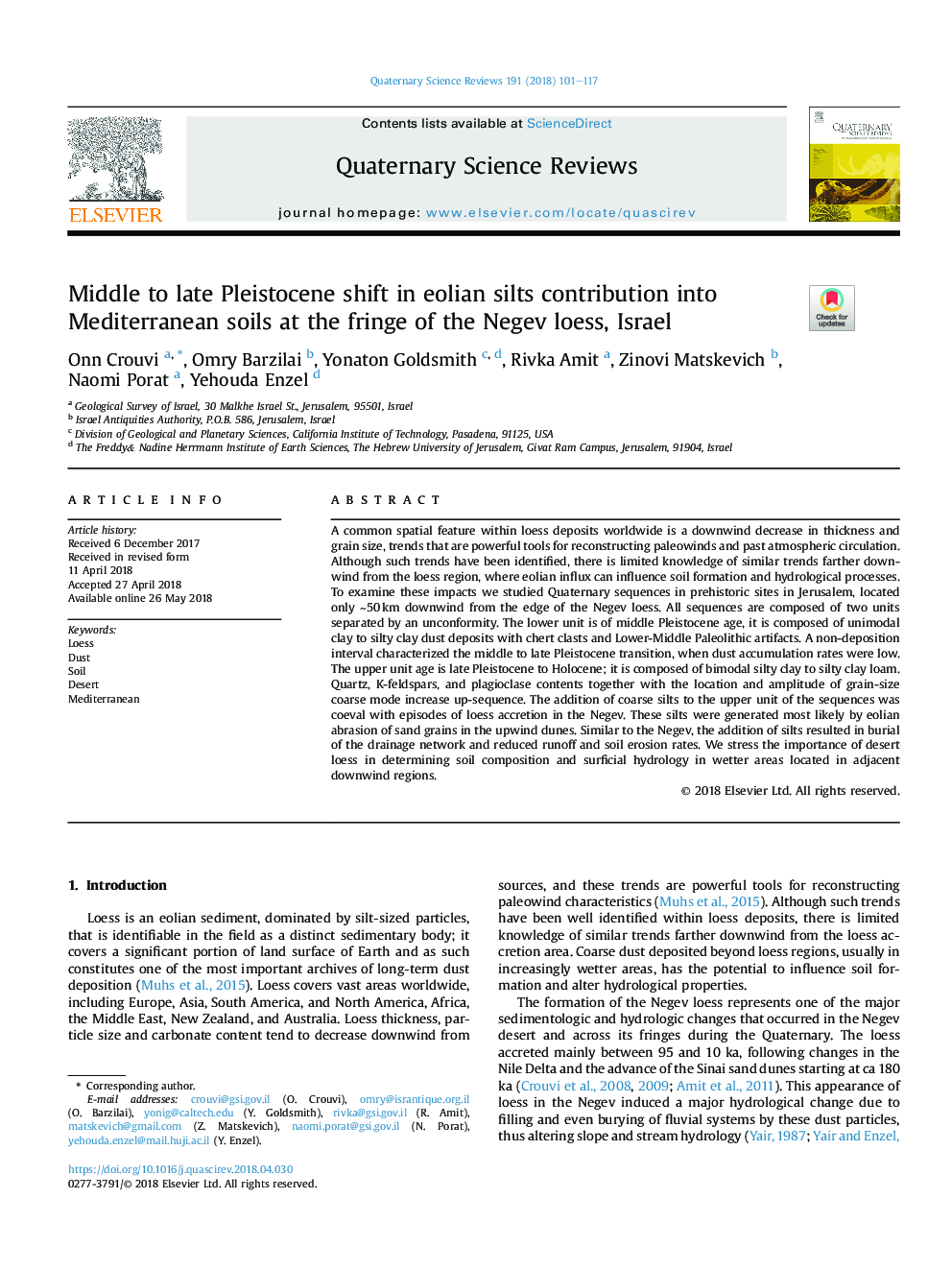| Article ID | Journal | Published Year | Pages | File Type |
|---|---|---|---|---|
| 8914751 | Quaternary Science Reviews | 2018 | 17 Pages |
Abstract
A common spatial feature within loess deposits worldwide is a downwind decrease in thickness and grain size, trends that are powerful tools for reconstructing paleowinds and past atmospheric circulation. Although such trends have been identified, there is limited knowledge of similar trends farther downwind from the loess region, where eolian influx can influence soil formation and hydrological processes. To examine these impacts we studied Quaternary sequences in prehistoric sites in Jerusalem, located only â¼50â¯km downwind from the edge of the Negev loess. All sequences are composed of two units separated by an unconformity. The lower unit is of middle Pleistocene age, it is composed of unimodal clay to silty clay dust deposits with chert clasts and Lower-Middle Paleolithic artifacts. A non-deposition interval characterized the middle to late Pleistocene transition, when dust accumulation rates were low. The upper unit age is late Pleistocene to Holocene; it is composed of bimodal silty clay to silty clay loam. Quartz, K-feldspars, and plagioclase contents together with the location and amplitude of grain-size coarse mode increase up-sequence. The addition of coarse silts to the upper unit of the sequences was coeval with episodes of loess accretion in the Negev. These silts were generated most likely by eolian abrasion of sand grains in the upwind dunes. Similar to the Negev, the addition of silts resulted in burial of the drainage network and reduced runoff and soil erosion rates. We stress the importance of desert loess in determining soil composition and surficial hydrology in wetter areas located in adjacent downwind regions.
Keywords
Related Topics
Physical Sciences and Engineering
Earth and Planetary Sciences
Geology
Authors
Onn Crouvi, Omry Barzilai, Yonaton Goldsmith, Rivka Amit, Zinovi Matskevich, Naomi Porat, Yehouda Enzel,
